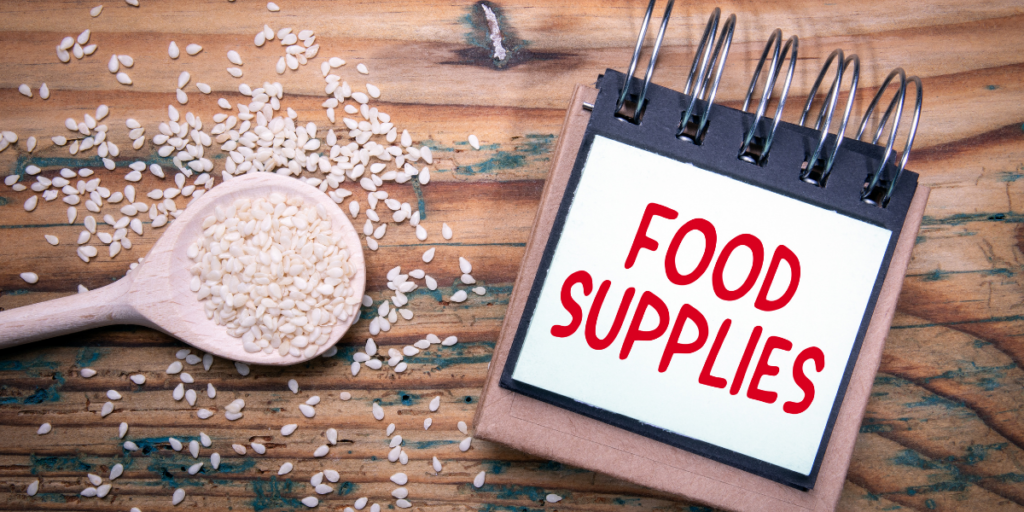Gluten-Free Emergency Preparedness
Published March 2022
Being prepared for an emergency or natural disaster requires a great deal of planning and anticipation of a wide variety of situations. If you need to evacuate to an emergency shelter, can you be sure there will be gluten-free food available? People who require a gluten-free diet need to pay extra attention to having safe food on hand, whether isolating at home or staying at an emergency shelter or other location.
Your emergency preparedness plan should include contacting your local Red Cross or other emergency shelters during a non-emergency time. Find out if they anticipate being able to provide gluten-free food. To be prepared for being at a shelter with limited – or potentially no gluten-free food options – increase the size of your evacuation food supply.
Here are some things you need to consider in order to be ready for anything.
Food Planning
The Red Cross recommends having a three-day supply of food on hand in an emergency evacuation kit and a two-week supply at home for a situation when you may be unable to access outside help or supplies. In both cases, foods included in your kits should be easy to store and consume without refrigeration or cooking since access to either, or both, may be cut off. This means gathering items that are canned, tetra-packed, dried, or otherwise shelf-stable.
For an extra layer of safety, connect with a local or regional gluten-free support group and/or with other gluten-free individuals in your area. These support groups could be sources of gluten-free food if other supplies and sources are unavailable. Find a local GIG support group: https://gluten.org/community/.
Food Item Selection
Include a variety of nutrient-dense foods in your kits. A nutrient-dense food is one that contains a relatively high concentration of essential nutrients in proportion to the energy, or calories, it provides or in proportion to the weight and size of the food. Dehydrated beans and tuna in pouches are examples of a nutrient-dense food suitable for an emergency kit.
Nutrient-dense foods are helpful when you need to physically carry the items in your emergency kit. If you have plenty of space for your two-week supply at home, then size and weight may not be a factor you need to consider. If you must leave your home, nutrient-dense foods help lighten your load, and that matters when you’re on the move.
In addition to sustenance and nutrition, food provides comfort. Include some of your favorite comfort foods in your kits. These can be especially helpful during a stressful emergency. Whatever foods you select, try to avoid very salty foods because they’ll make you thirstier and water may be in short supply.

Gluten-Free Food List
Always confirm the gluten-free status of any food you store in your emergency kits. Lightweight foods include freeze-dried, dehydrated, dried, and tetra packed. Larger or heavier food includes anything in boxes or cans.
- Meat/poultry/fish: Cooked and ready-to-eat in cans or dehydrated to be reconstituted, in shelf-stable pouches, or as jerky
- Cooked beans/lentils: shelf-stable pouches, bags, or cans
- Vegetables: canned or dehydrated in pouches
- Fruits: dried in pouches or canned
- Milk/milk alternatives: tetra-packed, shelf-stable, canned, dried or powdered
- Grains and grain-based (gluten-free) foods: crackers, shelf-stable wraps/tortillas, dry cereal, granola
- Energy or protein bars
- Canned, plastic-bottled, or tetra-packed juice
- Nuts and seeds plus nut butter in jars or pouches
Remember to include a hand-operated can opener in your kit.
Final Checklist
When facing an emergency, you might not have time to pack, let alone plan out what you’ll pack. Prepare an emergency backpack with essentials in advance and include anything that is specific to your gluten-free needs. Don’t forget:
- Gluten-free snacks – Make sure they are non-perishable, not easily crushed, lightweight and nutrient-rich, individually packaged.
- Gluten-free medication – Have an extra supply of prescription medication and supplements on hand, particularly if you’ve taken extra precautions to ensure the ones you take are gluten-free. Read: Are Your Medications and Supplements Gluten-Free?
- Dietary supplements – Pack extra vitamin and mineral supplements, especially anything recommended by your doctor or that you take in your normal daily routine.
- Pots, dishes, and utensils – A set of camping pots, dishes, and utensils that nest can be a lightweight and compact solution.
- Paper goods – Remove the rolls from paper towels (and toilet paper) or flatten them to take up less space. Napkins are less durable so rely on paper towels instead.
- Other tools – In addition to a hand-operated can opener, consider a multipurpose tool that has a bottle opener, corkscrew, scissors, and various knives.
For detailed information on all non-food-related aspects of emergency preparedness, check out these websites:
As you can see, if you need to eat gluten-free, you may have several extra steps to take in order to be prepared. Even if you are assured by emergency personnel that they can accommodate your gluten-free needs, you are better off bringing your own, even if only as a backup.
